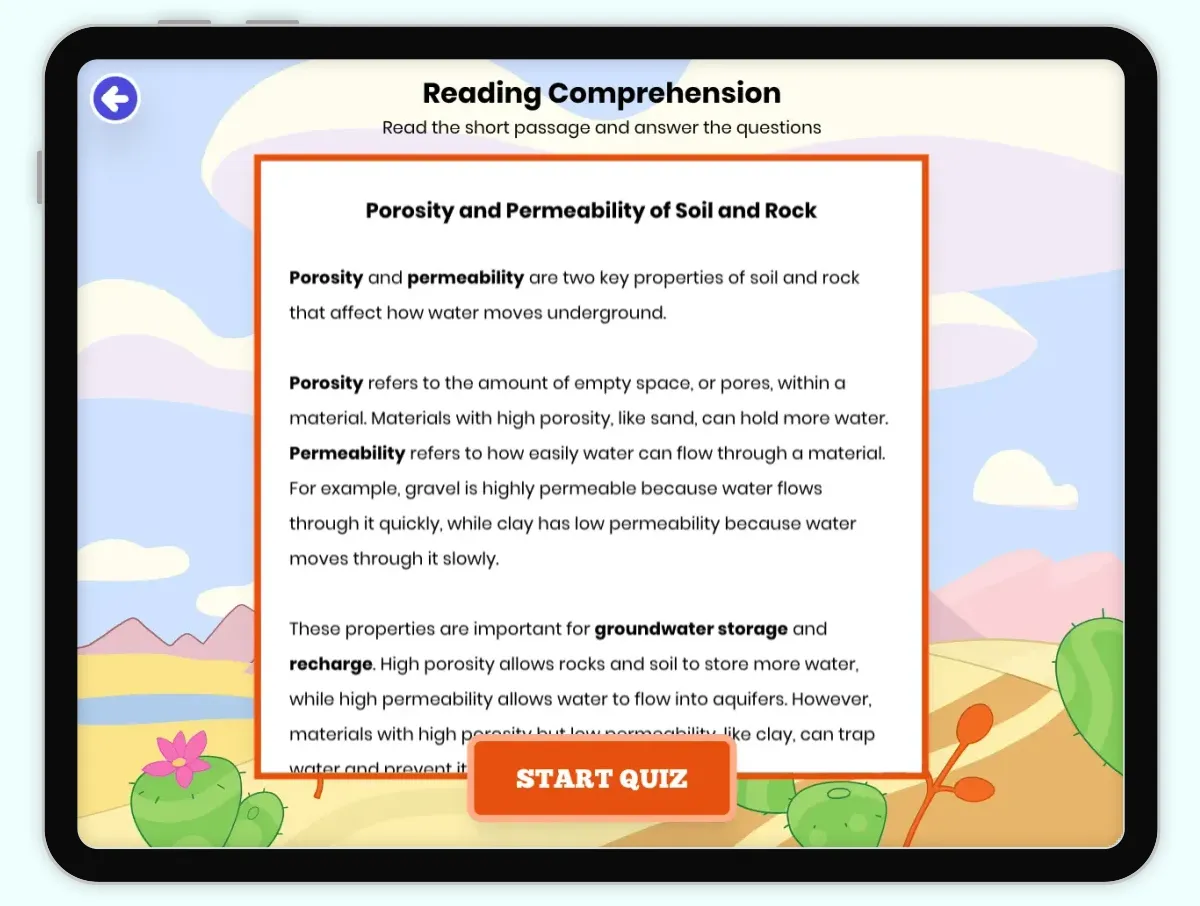Porosity and Permeability of Soil and Rock — Passage and Quiz
Porosity and Permeability of Soil and Rock
Porosity and permeability are two key properties of soil and rock that affect how water moves underground.
Porosity refers to the amount of empty space, or pores, within a material. Materials with high porosity, like sand, can hold more water. Permeability refers to how easily water can flow through a material. For example, gravel is highly permeable because water flows through it quickly, while clay has low permeability because water moves through it slowly.
These properties are important for groundwater storage and recharge. High porosity allows rocks and soil to store more water, while high permeability allows water to flow into aquifers. However, materials with high porosity but low permeability, like clay, can trap water and prevent it from reaching aquifers.
Understanding porosity and permeability helps scientists manage water resources, predict flooding, and design effective irrigation systems. For example, farmers use permeable soils to ensure water reaches plant roots, while engineers use impermeable materials to build dams and prevent leaks.
Fun fact: The Ogallala Aquifer, one of the largest aquifers in the world, has high porosity and permeability, allowing it to store and supply vast amounts of groundwater to the central United States.
Quiz
1. What is porosity?
2. What is permeability?
3. Which material has high porosity?
4. Which material has high permeability?
5. What is one importance of porosity and permeability?
6. What is one example of a material with low permeability?
7. What is the fun fact mentioned in the passage?
8. What is one use of impermeable materials?



















